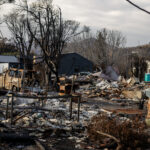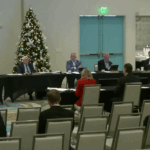A report detailing vulnerabilities leading to the destruction of nearly 350 homes in Colorado Springs from the 2012 Waldo Canyon Fire provides communities located in wildfire-prone areas guidance on how to reduce risk of wildfire damage.
Among the key findings in the Lessons from Waldo Canyon report produced by the Fire Adapted Communities Coalition are:
- Creating and maintaining defensible space around homes and businesses, and using ignition-resistant construction techniques.
- A community-wide approach to wildfire preparedness that includes all stakeholders improves the chances of mitigation efforts. The Colorado Springs Mitigation Section is a good example of this approach. Their actions reduced the number of homes destroyed or damaged during the Waldo Canyon Fire.
- Using fuels management tools to reduce flammable vegetation found around neighborhoods and in more remote areas is an effective way to reduce the spread of a wildfire.
“The damage would have been worse in Colorado Springs if not for the mitigation practices used in this area, including programs to reduce flammable vegetation surrounding the community and instituting a program that facilitated installation of Class A roof coverings when wood-shake roof coverings were replaced,” said Steve Quarles, senior scientist and wildfire expert with Insurance Institute for Business & Home Safety, which examined the report.
Lessons from Waldo Canyon is the first post-disaster field investigation report from, a national partnership in which IBHS is an active member.
Topics Wildfire
Was this article valuable?
Here are more articles you may enjoy.


 Chubb, The Hartford, Liberty and Travelers Team Up on Surety Tech Launch
Chubb, The Hartford, Liberty and Travelers Team Up on Surety Tech Launch  Death at Universal’s Orlando Resort Roller Coaster Ruled Accidental
Death at Universal’s Orlando Resort Roller Coaster Ruled Accidental  California Again Delays Wildfire Protection Rules for Homes
California Again Delays Wildfire Protection Rules for Homes  After Years of Pushing Rate Hikes, Florida’s Citizens Now Wants HO Rate Decrease
After Years of Pushing Rate Hikes, Florida’s Citizens Now Wants HO Rate Decrease 

